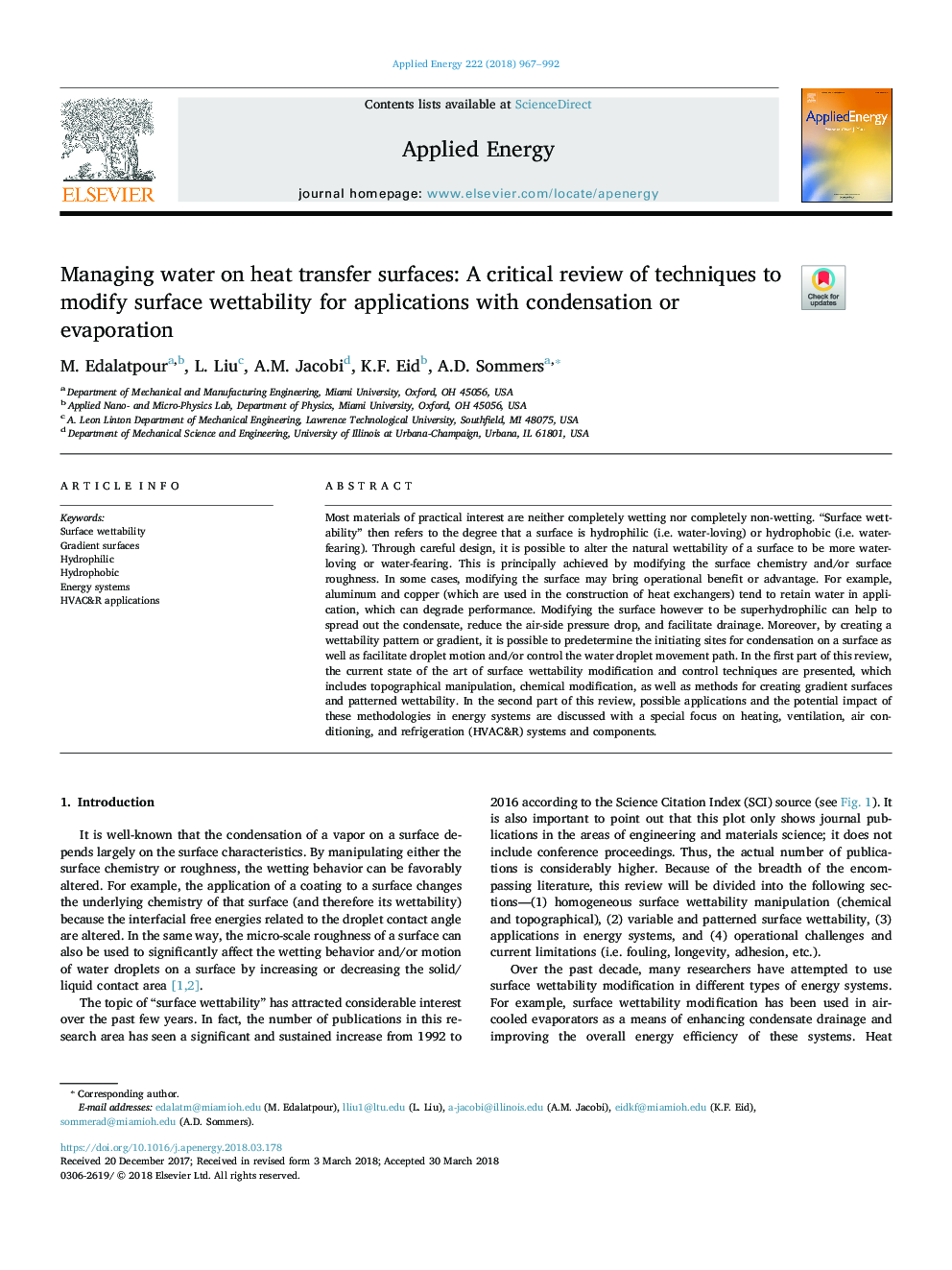| Article ID | Journal | Published Year | Pages | File Type |
|---|---|---|---|---|
| 6680202 | Applied Energy | 2018 | 26 Pages |
Abstract
Most materials of practical interest are neither completely wetting nor completely non-wetting. “Surface wettability” then refers to the degree that a surface is hydrophilic (i.e. water-loving) or hydrophobic (i.e. water-fearing). Through careful design, it is possible to alter the natural wettability of a surface to be more water-loving or water-fearing. This is principally achieved by modifying the surface chemistry and/or surface roughness. In some cases, modifying the surface may bring operational benefit or advantage. For example, aluminum and copper (which are used in the construction of heat exchangers) tend to retain water in application, which can degrade performance. Modifying the surface however to be superhydrophilic can help to spread out the condensate, reduce the air-side pressure drop, and facilitate drainage. Moreover, by creating a wettability pattern or gradient, it is possible to predetermine the initiating sites for condensation on a surface as well as facilitate droplet motion and/or control the water droplet movement path. In the first part of this review, the current state of the art of surface wettability modification and control techniques are presented, which includes topographical manipulation, chemical modification, as well as methods for creating gradient surfaces and patterned wettability. In the second part of this review, possible applications and the potential impact of these methodologies in energy systems are discussed with a special focus on heating, ventilation, air conditioning, and refrigeration (HVAC&R) systems and components.
Related Topics
Physical Sciences and Engineering
Energy
Energy Engineering and Power Technology
Authors
M. Edalatpour, L. Liu, A.M. Jacobi, K.F. Eid, A.D. Sommers,
